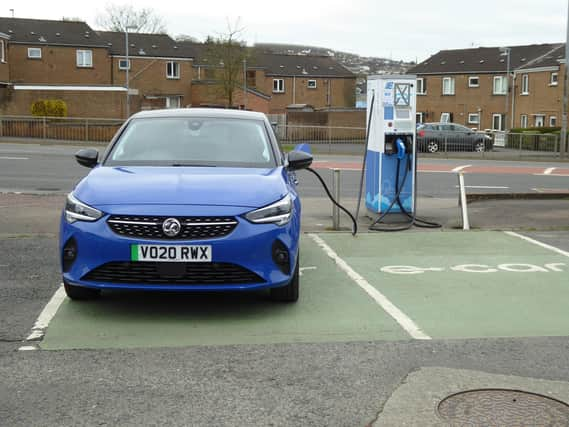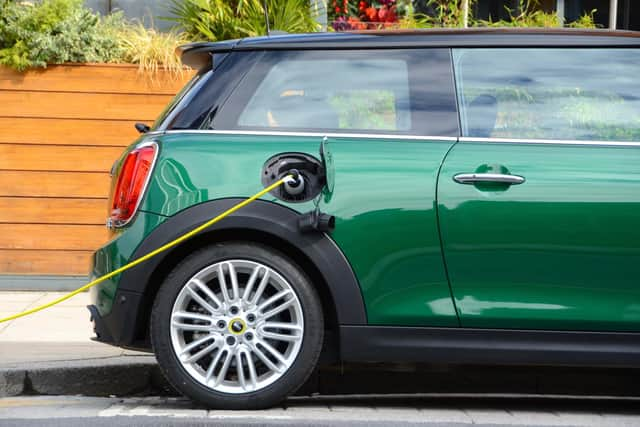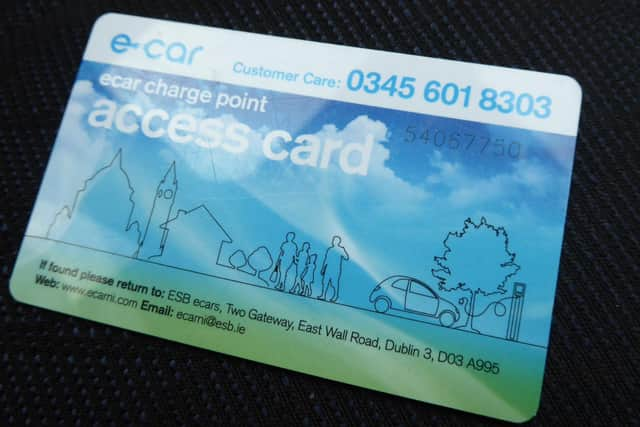ELECTRIC LINGO: Derry Journal Motors with Jim McCauley


EV acronyms
Among the confusing acronyms are ‘kW’ and ‘kWh’. EV battery sizes are quoted in kWh (kilowatt hours) while charging speeds are quoted in kW (kilowatts). However, the output of an EV’s electric motor can also expressed in kW, although sometimes this is quoted in PS, HP or BHP. The output of an electric motor of a plug-in hybrid vehicle (PHEV) is usually relatively low, whereas the power output of the electric motor of a pure EV is usually much higher, which is the reason why BEVs (battery electric vehicles) have strong performance, but PHEVs typically have poor performance when driving solely on electric power.
Battery size


The battery capacity of an EV is stated in kWh, but can be quoted in terms of the ‘actual’ size, and sometimes in their ‘usable’ size, both of which are different. Consumers can find it hard to know which battery size is being quoted for a particular EV, making like-for-like comparisons difficult.
Driving range
Advertisement
Hide AdAdvertisement
Hide AdIt can be difficult to understand the realistic driving range that can be expected from an EV. Although the older and less accurate (NEDC) driving range figure has been replaced by the updated official Worldwide Harmonised Light Vehicle Test Procedure (WLTP) figure, this is still not a realistic expectation of what can expected in real-world driving due to variables such as driving style, weather, load, topography, etc.
Charging speeds


There are various charging speeds depending on the chosen chargepoint. Slow charging should refer to home charging using a 3-pin plug, or up to 3 kW. Fast charging should refer to 7 kW (a home wall box) to 22 kW (typically found at a public charging site). Rapid charging refers to public charging that is between 50 kW to 150 kW, and ultra-rapid charging refers to charging at rates above 150 kW.
Maximum charge rate
Different EVs have different maximum charging rates. The maximum charging rate of an EV is important, because if you plug your EV into a 350 kW chargepoint but your EV can only charge at 100 kW, then your charging will be slow compared to an EV that can charge at 350 kW.
Drop-off in charging speed
Cars do not charge consistently at the given maximum charge rate of the chargepoint. While a charge might start at an indicated 100 kW, it could be less, and it will drop from this rate, typically reducing down in steps. This is because an EV is likely to charge at a fast rate when its battery is almost empty, but when the battery charge increases, the charging speed will drop significantly. It’s for this reason that EV manufacturers will typically quote rapid charge times from 10% to 80% rather than to 100% – although again there is much inconsistency in the industry about the exact figures that are quoted.
Public charging, connectors & cables
Advertisement
Hide AdAdvertisement
Hide AdThere are lots of technical terms used when referring to charging connectors and cables – such as CHAdeMO, CCS, Type 1, Type 2, etc. However, the vast majority of new EVs use just one type of charging connector for public rapid charging – CCS (combined charging system) – and charging at most rapid chargers is a simple cable connection using contactless payment.
Efficiency
A ‘miles per gallon’ figure has been quoted for petrol and diesel cars for many years, to compare how efficient one car is against another. An MPG figure isn’t applicable to an EV, but with rising energy prices, it’s important to know how efficient an EV is compared to rivals. Efficiency figures exist for EVs, but they’re often not easy to find, and the figures quoted can be inconsistent. For example, some EVs have a ‘miles/kWh’ figure quoted, whereas others have figures for ‘kWh/100km’, ‘Wh/mi’ or ‘Wh/km’. Miles/kWh is the most easily comparable with miles per gallon, so should be used for consistency.
Electrified
Manufacturers are increasingly using the term ‘electrified’ for their cars, combining all options – fully electric, plug-in hybrid, hybrid, and mild hybrid. Full electric cars are totally dependent on battery power and generally benefit from having off street home parking and a dedicated wall box for a quicker charge than using a standard home socket. A plug-in hybrid shares its motive power between an internal combustion engine and electric motor, the battery for which can be plugged in for charging. However, the electric-only range can be limited, but ideal for daily short journeys, giving way to the petrol or diesel engine for longer travel. Hybrid and mild hybrid cars are typically self-charging with no plug-in requirements but with electric power limited to very short mileages and / or support to the main engine, supporting acceleration.
DriveElectric has used the findings to update its website where each vehicle is accompanied by a graphic that instantly provides four values for an its range: the official WLTP range, summer real-world range, winter real-world range, and the combined real-world range. In addition, information is clearly provided about an EV’s efficiency, useable battery size, and maximum rate of charging.